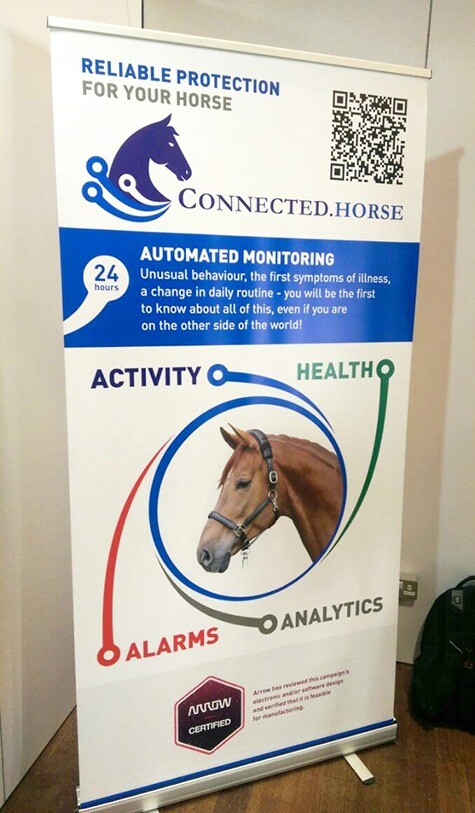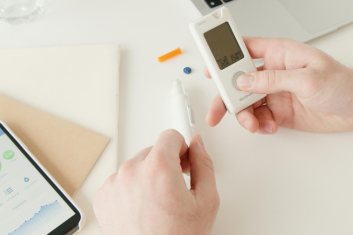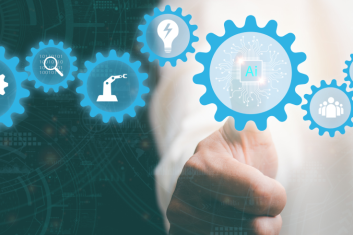The two-day specialized IoT Tech Expo Europe 2017 took place in Berlin at the beginning of June. The conference & exhibition attracted more than 4000 visitors from all over Europe. HQSoftware’s CTO Vasil Tarasevich and PM Angelina Moroz visited the exhibition and below share their opinions and forecasts on the IoT sector.
Regional Network for Interaction of IoT Devices
The increasing use of wireless devices demonstrates the importance of finding a compromise between the speed of data transfer and battery life. In this regard, the LoRaWAN protocol may become the preferred solution as, after analyzing recent IoT changes and trends, Vasil Tarasevich notes the constantly growing influence of the LoRa Alliance.
The LoRa Alliance is a non-commercial organization that promotes the utilization of the LoRaWAN protocol as a universal standard for global networks with low energy consumption. It joins together software developers, microelectronics manufacturers and telecom providers such as IBM, Cisco, Inmarsat, and other industrial giants.
According to Vasil Tarasevich, being an alliance member significantly increases a firm’s attractiveness to existing and potential partners, and allows the firm to achieve a higher position in the IoT development sector.
What If Horses Could Speak?
A noteworthy project demonstrated at the tech expo was the Connected.horse system – a smart solution for remote horse behavior monitoring.
The system allows the tracking of unusual animal behavior and the diagnosis of first illness symptoms. Lightweight sensors are installed in an animal-worn case. Then cloud computing, artificial intelligence, and complex math algorithms undertake the analysis of the gathered data and provide a convenient visualization to the end-user.
At first sight, this solution may seem specific, but it could be implemented in such fields as horseracing, wider animal breeding, and farming of livestock. Constant and automated monitoring of animals could help avoid huge losses.
The Future of Insurance Sector
Applications directed at preventing possible difficulties and problems can dramatically improve life safety.
Let’s take a closer look at the transportation sector: installed sensors can help monitor driver behavior and the vehicle’s technical conditions. Insurance companies have already been using this kind of data in their services and where the vehicle operator drives unsafely, higher insurance rates can be charged.
However, the deployment of smart devices and Big Data analysis may represent a threat to insurance companies. If sensors send the required information and allow for maintenance in advance of any problems, the demand for insurance services will drop.
Here’s another example: remote engine shutdown will reduce the number of car thefts resulting in fewer security services being sold. In the past, the option used to be expensive because of the satellite monitoring and special devices involved.
Today it could reach the level of every car owner. It’s possible to shut down the engine in case of an emergency right from the smartphone. The wide use of such services will result in a decrease in car thefts and scraps. As a result, the demand for insurance, as well as prices, will fall. This is not a hypothetical situation; these are real problems that companies are beginning to face.
Targeting Seniors
One of the IT market trends to be highlighted is the targeting of seniors for their involvement in provided technological services. Uber and Lyft have already introduced solutions for senior citizens within the sector of medical transportation. Companies have announced new forms of partnerships with healthcare providers that will allow seniors who don’t drive for any reason to use ride services.
Health care and home-caring personnel have become a middleman between the carriers and generation X, Y, Z. Compared to regular taxi and medical transportation, telematics platform services are more affordable. But the main benefit of smart transportation is the opportunity to track the car. Monitoring of the ride may become crucial as society ages, given old people often have a loss of orientation and memory disorders.
Turkish Airlines: Differentiating the Use of IoT
When speaking of IoT solutions in the aviation industry, operational efficiency is the first thing to come to one’s mind. Airlines use smart technologies in fuel consumption optimization and predictive maintenance. But Turkish Airlines has found a way to use IoT for passengers’ navigation. The sensors installed inside the airport area interact with smartphones helping to find the required gate or a shop.
Turkish Airlines also plans to add new features such as saving an exact vehicle location in the parking lot in the system. Searching for a car in the large multi-level parking lot after a holiday can be a headache: this may now be a thing of the past. Additionally, using special tracing bracelets connected to the system will allow parents to keep track of their kids, as children tend to get lost in crowded places.
Beacon Devices in Everyday Life
Beacon sensors are widely used in the restaurant business, retail, logistics and smart home systems. The devices operate in the following way: when a smartphone is in the area of sensor detection, the app user receives a quick notification. Beacons aren’t a novelty in themselves, but new and unusual ideas to implement devices in everyday life are continually offered.
“Today there is a new way to allow access or to monitor employees during working hours. No access cards, electronic locks, tourniquets or video control systems are required. All you need is a smartphone and the installation of several sensors. The next step is to download the app and set the configurations to monitor the required parameters such as the time of appearance at the workplace or absence duration”, comments Angelina Moroz.
“Using access cards can give employees some space for cheating: workers can hand give their card to colleagues for activation, to make a monitoring system record the wrong time of coming or leaving the working place. Or cards can be left around accidentally, creating a security risk. But the chances of forgetting to grab your cell phone are less.
“This simple app seriously decreases the potential for misconduct at the working place and improves the monitoring quality without any additional costs. Using the app resolves the issue. After all, you wouldn’t give the phone to anybody for a lasting period of time, would you?”
Deal or No Deal: Two Directions for IoT Development
HQSoftware’s CTO reflects on one of the tweets from the IoT Tech Expo partakers:
“Creating industrial solutions is a specific process. It’s always hard to forecast but I believe there are two ways for IoT community development.
The first scenario is that devices manufactured by different producers are compatible with only certain protocols. Every particular project will require custom software development.
The second variant suggests the acknowledgment of unified protocols. In this case, software development will evolve into the process of templates and the composing of ready modules. Time will tell which route is used.”
Summing Up
Products and solutions demonstrated at IoT Tech Expo show the confident deployment of smart devices and M2M communication into business verticals from healthcare to manufacturing.
In fact, any device may become “smart” with the help of sensors and network access. The growing IoT market offers more and more sophisticated development tools, the use of which is limited only by our imagination.

HQSoftware Founder
Having founded the company in 2001, uses his broad knowledge to drive the company forward. Ready to share his wisdom on software development and technology insights
Related Posts
View All
We are open to seeing your business needs and determining the best solution. Complete this form, and receive a free personalized proposal from your dedicated manager.

Sergei Vardomatski
Founder








